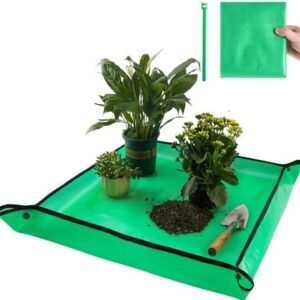Growing your own food is not only a rewarding experience, but it can also be a fun and educational way to connect with nature. If you’re new to edible gardening and don’t know where to start, don’t worry – we’ve got you covered. In this beginner’s guide, we’ll walk you through the basics of edible gardening and give you all the tools you need to grow your own delicious fruits and vegetables right in your own backyard.
The first step in starting your edible garden is to choose a location. Most fruits and vegetables require full sun, so look for a spot in your yard that gets at least six hours of direct sunlight each day. You’ll also want to make sure the area has good drainage, as waterlogged soil can lead to root rot and other problems. Once you’ve found the perfect spot, it’s time to start preparing the soil.
Before planting your fruits and vegetables, it’s important to test your soil to determine its pH level and nutrient content. You can purchase a soil testing kit at your local garden center or contact your local cooperative extension office for assistance. Once you know the condition of your soil, you can amend it as needed by adding compost, manure, or other organic matter to improve its fertility.
Now that your soil is ready, it’s time to choose your plants. When selecting fruits and vegetables for your garden, consider factors such as your climate, the amount of space you have available, and your personal preferences. Some easy-to-grow options for beginners include tomatoes, zucchini, cucumbers, lettuce, and herbs like basil and mint. If you’re feeling more adventurous, you could also try growing berries, melons, or even a fruit tree.
When it comes to planting your fruits and vegetables, follow the instructions on the seed packets or plant labels carefully. Most plants should be spaced a certain distance apart to allow room for their roots to grow and prevent overcrowding. If you’re planting seeds, be sure to water them regularly until they germinate, and then continue to water as needed to keep the soil moist.
As your plants grow, it’s important to monitor their progress and provide them with the care they need to thrive. This includes watering them regularly, mulching around them to retain moisture and suppress weeds, and fertilizing them as needed to replenish nutrients in the soil. You should also keep an eye out for pests and diseases, which can damage your plants if left unchecked.
One of the best things about edible gardening is the satisfaction of harvesting your own fresh produce. The best time to pick fruits and vegetables varies depending on the type of plant, but in general, you’ll want to harvest them when they are ripe and at their peak flavor. For example, tomatoes should be picked when they are firm but still slightly soft, while zucchini and cucumbers are best picked when they are small and tender.
Once you’ve harvested your fruits and vegetables, there are countless ways to enjoy them. You can eat them fresh, add them to salads or sandwiches, or even preserve them by canning, freezing, or pickling. Growing your own food not only tastes better than store-bought produce, but it also allows you to control the quality of the ingredients and reduce your carbon footprint by reducing the need for transportation and packaging.
As you gain more experience with edible gardening, you may want to expand your garden to include a wider variety of plants or experiment with different growing techniques, such as companion planting, vertical gardening, or raised beds. There is always something new to learn in the world of gardening, so don’t be afraid to try new things and see what works best for you.
In conclusion, edible gardening is a fun and rewarding hobby that can provide you with a bountiful harvest of fresh, healthy food right in your own backyard. By following the tips and advice outlined in this beginner’s guide, you can start your own edible garden with confidence and enjoy the many benefits that come with growing your own food. So roll up your sleeves, get your hands dirty, and start planting – your taste buds will thank you!






